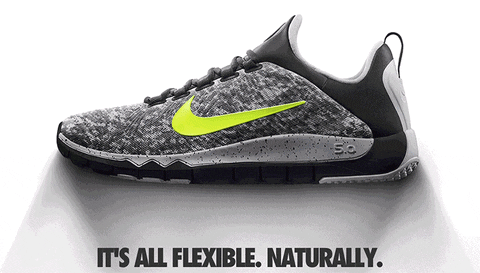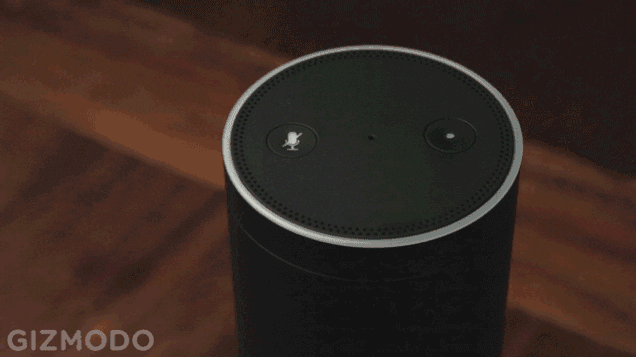
ecommerce ai
10 of the hottest retail trends that will disrupt 2022

From Genderless Fashion to Virtual Reality and Sustainable & Ethical being the new normal, we have gathered 10 of the hottest trends that will disrupt retail in 2022. If you want to ride the wave and compete in the next challenging phases of retail as the world economies start to re-open, these are the ones you will have to keep your eye on.
1. Genderless fashion is under construction
The term “genderless fashion” is still under construction, much like the “unisex” label in the 1960s. However, the latest data indicates that 56% of Gen Z regularly shop outside their gender categories. The fashion industry is trying to grasp the overall concept, with brands like H&M, Zara, and Vans responding with gender-fluid collections. Retail industry futurists predict that genderless clothing will influence a significant part of fashion’s future. As genders become blurred, so will the traditional fashion identities of both men and women.
Genderless fashion trends and the conversations about them will continually evolve. For eCommerce retailers, 2022 is as great a time as any to respond to consumers’ wants, needs, and values to support an inclusive movement that is just finding its voice. This also suggests that the traditional search between ‘Men’ and ‘Women’ clothing will have to be revisited as the categorizations become more blurred than ever.

2. Sustainable & Ethical is the the new normal
The push for sustainable and ethical fashion has significantly impacted retail in 2021, as consumers chose to shop with brands whose values and ethics mirrored theirs. Today’s consumers push fashion brands to limit their impact on climate change and stop abusing human rights. The latest data indicates that searches including sustainability-related keywords have increased 75% year-on-year. The Fashion Industry has responded with 130 companies signing up to the Fashion Industry Charter for Climate Action, including Burberry, H&M, and Adidas.
Brands have also integrated the use of organic cotton, vegan leather, recycled plastic bottles, and other recycled materials into their new collections. Large fashion houses such as Armani, Gucci, and Versace have also wholly eradicated fur from their products.
Today’s ‘conscious consumer’ needs to know what their product is made from, where it is made, and what they can do when they have finished with it. eCommerce fashion retailers need to respond by being 100% transparent about how their products incorporate values of sustainability, environmental, and human ethics.

3. Slow fashion and ReCommerce go mainstream
Gucci, Saint Laurent, and Vogue are no longer participating in the traditional fashion calendar, and instead are choosing to slow down, produce less, and take control of their own schedule. The emphasis on ‘seasonless fashion’ continues to trend upwards. This emergence of ‘Slow Fashion’, will mean that clothing will last longer than one season and can be reused through as many different seasons as possible.
This is also good news for reCommerce – with second-hand fashion eCommerce stores continuing to grow exponentially. ThredUp, the world’s largest reCommerce store, has amassed 7M monthly visitors. As a result, consumers have adopted new thrifting hobbies and seek more affordable options from home while in quarantine. Big fashion houses are no exception. -Burberry, H&M, and Patagonia are launching reCommerce and rental models as well.

4. experience-related shopping becomes the key to survival
The pandemic gave rise to the ‘at home’ economy, which appears to be here to stay as the hybrid working model is implemented. Consumers have gone digital-first and online shopping has surged globally. Retailers must innovate their customer experience offering to keep pace with this continuous high demand, to get discovered and connect with new customers. ‘Experience-related’ shopping has expanded in importance as live streaming continues to grow in popularity. Home-bound consumers are able to engage with celebrities and influencers hosting entertainment shows when shopping online.
Brands like Lidl use a treasure hunt experience; ASOS has experienced phenomenal growth through its localizing experiences that provide locally-relevant curated products, and Gucci is successfully blending in-store and digital experiences. eCommerce brands have recognized the value of live video as a channel to sell products and interact with customers by making the whole experience more fun and interactive.

5. Personalized experiences are so satisfying
Consumers attach high value to personalized online shopping experiences that help them find the products they need quickly. This is the key to keeping them satisfied, as poor product recommendations result in shoppers avoiding specific sites altogether. Furthermore, the latest data suggests that 80% of consumers are more likely to purchase from a brand that offers personalized content and promotions, leading to a 20% uplift in conversions. Brands like Netflix, Bandier, and SeaVees embrace personalized experiences via product recommendations, curating bestseller lists, which drive higher click-throughs and improve trust and loyalty.
To compete in this next phase of retail, your eCommerce platform needs to offer personalization tools that tailor your customers’ experiences. These include AI-powered product recommendations that show consumers personalized ‘similar items’ and ‘complete the look’ suggestions based on visual deep tagging, user selections, and shopping intent cues. As well as AI-powered search that uses category matching, synonym functionality, and optimization of auto-complete queries to deliver accurate and relevant results.

6. The emergence of the visual age
Retail is inherently a visual process as people intuitively think about products visually. However, the language of retail is also constantly changing, leading to an overwhelming number of ways to describe a product. Keyword-based search is a blunt instrument for carving out a nuanced shopping journey, as words are limited in describing something visual. Shoppers also don’t know how to describe what they are looking for as well at times. Visual Search has been around for many years and is now built into popular search engines and social media platforms, including Pinterest, Google, and Amazon. Pinterest Lens is a powerful ally of fashion brands, retailers, and home décor companies. Pinterest states that “90% of users’ purchasing decisions are informed by information attained through the Visual Search technology”.
The Visual Age will become popular in 2022 as visual commerce expands and takes marketing to a whole new level. Instead of just relying on product photos, eCommerce brands are expected to take things a step further by incorporating other types of content, such as user-generated content, interactive content, engaging and interactive videos, and augmented reality.

7. Augmented Shopping = Must-Have
Now that we have lived during a time where we could not go anywhere, augmented shopping has become a must-have for the retail industry. From beauty products to homewares and fashion, augmented shopping lets consumers ‘try before you buy’ and is helping make the online world more tangible. Consumers return up to 40% of products purchased online, so a key benefit of augmented shopping is to reduce the frustration and wastage with returns. Virtual fitting rooms, which help shoppers find different sizes and colors that can significantly increase online conversion rates.
Shopify has introduced “Shopify AR”, which is an off-the-shelf toolkit for showcasing products. Other brands, such as IKEA, Sephora, and Adidas have integrated AR and VR to boost their product promotions by using a virtual experience to guide their customers towards making a purchase. Although it is still in an experimental stage, there is no doubt it will be a significant part of the retail landscape in 2022.

8. retailers discover the advantages of AI
AI has already been incorporated into a huge part of the retail space, and a study from IBM predicted that 80% of retail companies would be using AI within the next three years. Typical uses of AI in retail that are now commonplace include customer service chatbots, inventory management, integrated buying journey, visual curation, and more. In addition, AI that enables automation increases efficiency and productivity.
The right AI tools will be a game-changer for the retail industry, giving those that embrace it a significant competitive advantage. In 2022, we expect AI to start streamlining the workflow, using computer vision and NLP, to automate fabric libraries and, in doing so, dramatically shorten the design to source timeline for faster and more accurate material selection.

9. Voice commerce is going to change the game
Voice commerce is not an entirely new concept, having taken off in 2014 with Amazon Echo that allowed people to purchase products on Amazon via voice alone. The projected value of worldwide transactions through voice assistants is forecasted to reach $19.4 billion by 2023. So, if 2020 was all about eCommerce, then the future belongs to voice commerce. With over 4.2 billion smart devices globally, now is the time to optimize your brand, products, and services for voice search and expand your digital reach.
Voice search is here to stay and it has moved far beyond just researching products to the end-to-end customer journey. One of the effects of the pandemic, has been consumers making a move to using voice search to complete their order. Large retailers are now offering customized voice-ordering features as consumers fully embrace this convenient, hands-free shopping experience.

10. Robots incoming!
We are all fascinated by robots, and they were always meant to be a part of our future. The presence of robots will change the retail landscape in dramatic ways. Autonomous robots have moved on from just cleaning retail stores to shelf-scanning, answering customers’ questions, and helping locate items. One of the most effective ways that robots will work in retail is data collection. European grocery giant, Auchan, already has robots moving around the store photographing shelves and converting this into real-time metric data. This gives instant insights into what people are buying and when.
Another key robot trend expected to take flight in 2022 is drone delivery, with FedEx, Amazon, and Alibaba trialing. this delivery method. Drones can travel faster across and above terrains to deliver perishable items and medicines more efficiently, making them more favorable. Autonomous delivery robots will also be walking. our streets in 2022 to deliver packages over short distances. Amazon Scout is currently navigating neighborhoods and will soon be delivering packages to your doorstep, so stay alert!

what are you waiting for?
Join Our Newsletter
Join hundreds of other people like you, who have subscribed to our newsletter to receive regular insights into key retail trends and exclusive product announcements. Click here to subscribe.
Subscribe for latest updates
Want to keep updated on the latest happenings in AI and Programmatic? Subscribe to our updates and stay in the loop

